GISBERT L. BRUNNER




and opposite



Some significant innovations in the watch industry are owed to the initiative and perseverance of Hans Wilsdorf, Bavarian by birth and later Englishman by choice. They include officially certified chronometers, waterproof Oyster cases, the perpetual rotor in mechanical movements, Datejust with “date just in time”, the Submariner divers’ watch, the GMT-Master with indication of a second zone time, the magnifying glass for better reading of the window date, and the Day-Date with day-of-week and date indication. His unerring feel for targeted marketing and the importance of brand ambassadors, better known today as testimonials, broke new ground. Wilsdorf knew that doing good is not enough; to raise the intended awareness you also have to find a suitable means of talking about it. Looking back, Wilsdorf’s life was full of creative ideas, untiring creativity and a keen sense of trends in the watch business.
Aside from his business affairs, the Rolex founder placed great importance on lifestyle. Whenever possible, he spent two hours on his morning ablutions. It was during this ritual that many of his best ideas came to him. The general manager expected colleagues on the executive floor to dress well. When problems arose, he did not
hesitate to address them directly and to take appropriate action. Acknowledged by all as the boss, he tolerated no opposition.
Despite this, his employees appreciated Hans Wilsdorf as a true gentleman who valued good relations. Several times a year, he visited the various departments of his company to voice his praise and gratitude to his employees. Especially before Christmas and the annual watchmaking holidays, the boss would do his rounds in the labyrinthine building in Geneva’s Carouge district. At the time, the five-day week with which we are familiar today was unheard of. Especially after returning from his far-flung visits to international customers, Hans Wilsdorf would invite staff to take a glass of port with him on Saturdays. During these informal occasions, he would report on his travels near and far.
From 1947, Betty Mettler, his personal assistant and secretary, accompanied him on his travels. The charismatic company owner had met her at one of his favourite Geneva restaurants, where she was a receptionist. In the course of the often month-long trips by plane, ship, railway or car the two got to know each other so well that they married in November 1950. As a couple, they
Hans Wilsdorf, approx. 1945
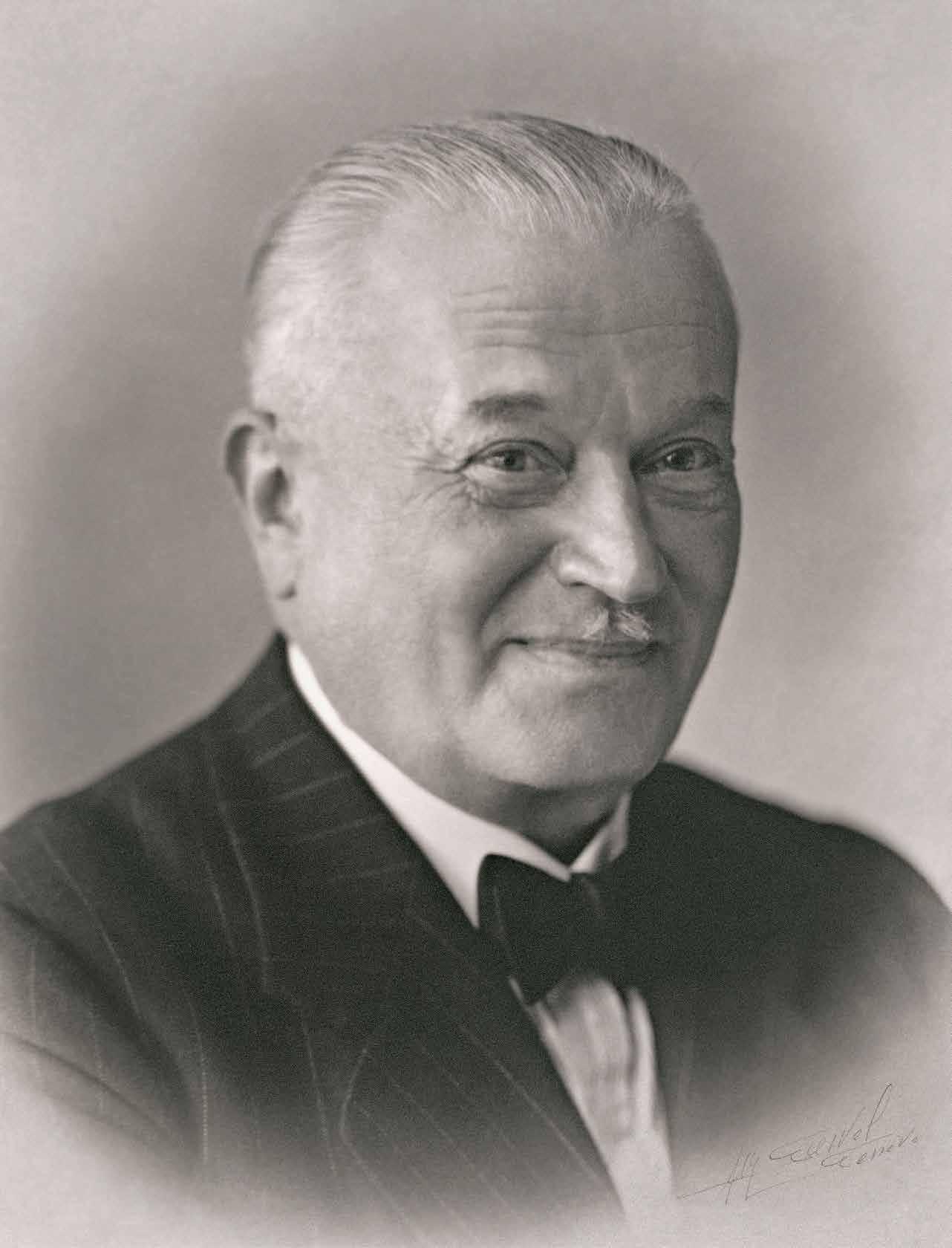
In 1926, Rolex introduced the “Oyster”, the first waterproof wristwatch. Its hermetically sealed case represented a significant advancement, ensuring optimal suitability for daily use and protection for the watch’s movement against water and dust.
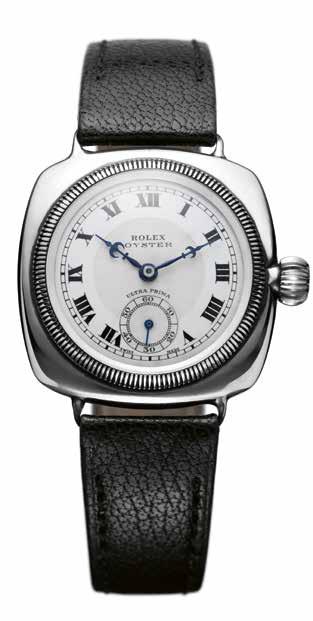
1 9 2 6 1 9 4 5
1 9 3 1
Introduced in 1931, the Oyster Perpetual featured Rolex’s patented Perpetual movement – a groundbreaking self-winding mechanism with a Perpetual rotor. This innovative system remains the foundation of all modern automatic wristwatches.

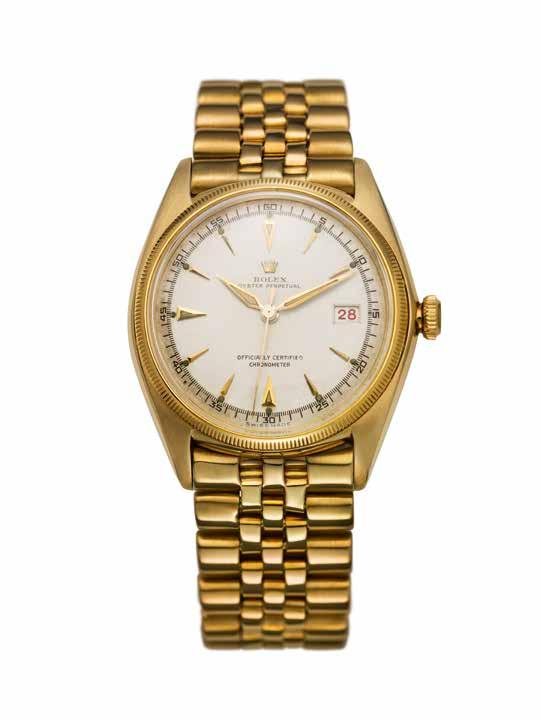
In 1945, the Datejust was introduced as the first self-winding wrist chronometer with waterproof Oyster case and featuring a date window on the dial. Distinguished by its Jubilee bracelet and fluted bezel, it became a signature piece of the Oyster Perpetual collection.
1 9 5 3
The Explorer was launched in 1953 to commemorate the historic Mount Everest expeditions. It swiftly attained iconic status in the world of watches.
The GMT-Master with 12- and 24-hour hand, introduced 1955, was designed as a navigation tool for global travellers and became the official watch for several airlines, including the renowned Pan Am. It features a distinctive two-tone bezel to differentiate day from night.
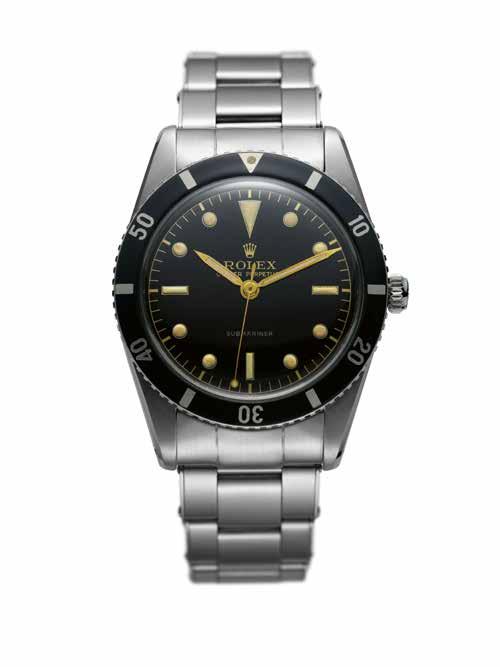
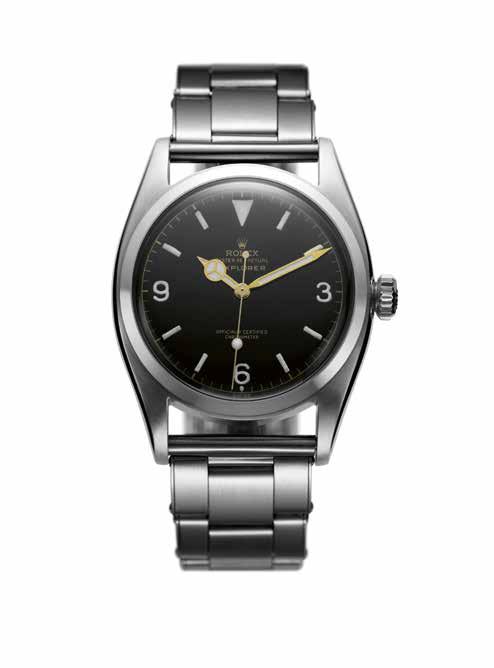
Launched in 1953, the Oyster Perpetual Submariner was one of Rolex’s first professional diving watches, waterproof up to 10 bar. Today, it combines advanced technology with iconic status and is embraced by adventurers exploring the ocean‘s depths and beyond.
1 9 5 5 1 9 5 3
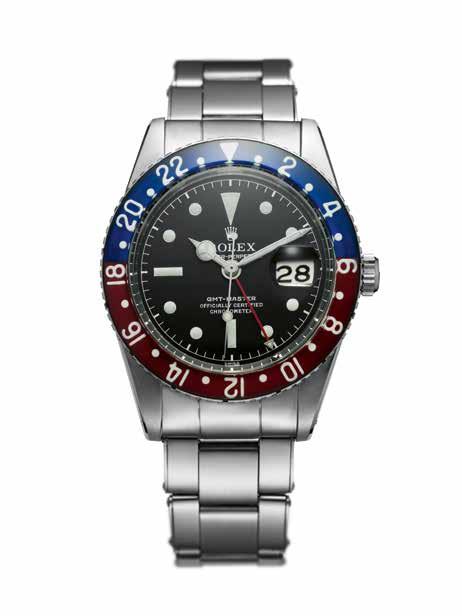
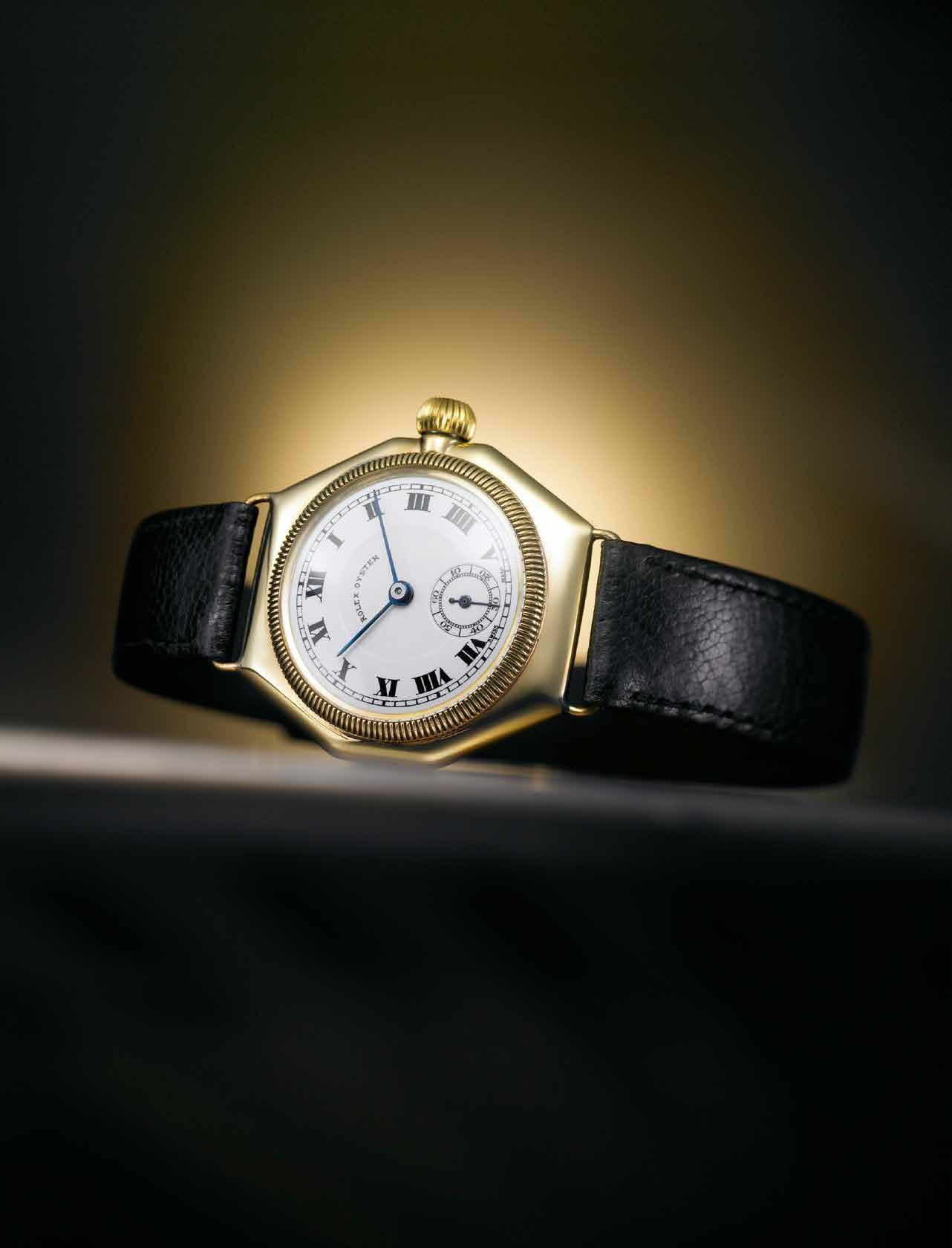
ufacturer produced merchandise that was simultaneously of insufficiently good quality and difficult to service. Experiences with dirt, moisture, balance-staffs broken by impacts, poorly engineered cases and miniature movements led this critic to hope that “the ongoing masculinization of the female sex,” which had also popularised “the gent’s vest among ladies,” will “soon toll the bell and, at long last, save watchmakers from the tyranny of the wristwatch.”
As everyone knows, this long-suffering watchmaker’s wish never came true. If he had waited a year or two before publishing his book, his verdict might have been different thanks to the progress made by Hans Wilsdorf in the interim. With typically German thoroughness, Wilsdorf had already applied his inventive mind to the problem of permeable cases in the early 1920s. His first attempt to rectify the situation involved the use of screwed cases supplied by the Dennison Watch Case Company. Wilsdorf received a patent in 1923 for a hermetically sealed case with an inner container for the movement. But this solution, which was the brainchild of the Swiss manufacturer Francis Baumgartner, had a severe disadvantage: the wearer had to completely unscrew the bezel before he could begin winding the mainspring. In this context, the pragmatically minded Wilsdorf – who was not primarily a technician – became increasingly aware of the problems associated with elastic insulating materials. He accordingly focused his thoughts on a purely mechanical construction. This harmonised very well with ideas that had been developed by Ulysse Georges Perret and Paul Perregaux, who in 1925 patented a crown that was screwed to the middle piece of the case.
Hans Wilsdorf was wholly convinced and purchased the rights to their idea. Rolex applied for
a patent for a screwed case on 21 September 1926. A subsequent application on 18 October related to the screwed crown. Persuaded by the newness and uniqueness of the case construction, the authorities granted protection patent without any ifs, ands or buts. Hans Wilsdorf already had a suitable name in mind. “Oyster” aptly combined the desired characteristics. But Rolex wasn’t content with the watch alone. Simultaneous with the formalities, innovative testing devices were also invented which could detect water droplets weighing a mere 0.05 milligram inside the watch’s cases. A successful check confirmed that the Oyster cases were able to withstand water pressure to a depth of 15 metres. Now nothing more stood between Rolex and glorious global success.
Hans Wilsdorf wasn’t only a talented businessman: he was also a cosmopolitan marketing genius, so he was well aware that nothing has really happened until people talk and write about it. With this in mind, he arranged to have the new Oyster prove its capabilities in the context of spectacular practical tests. An Amazon named Mercedes Gleitze was an ideal partner for this project. This steno grapher from London stepped into the cold saltwater at Cap Gris-Nez, a peninsula between Calais and Boulogne-surMer, at 2:55 a.m. on 7 October 1927, and began swimming across the inclement English Channel. After 15 hours and 15 minutes of this torturous immersion, including a near collision with a steamship, the exhausted and hypothermic Englishwoman again set foot on British land at 6:10 p.m. But sharp-tongued critics claimed that she had faked the feat, so she planned to cross the Channel a second time a mere two weeks later. This second crossing would be in even
Visitors at the watch fair in Basel, and naturally also the authorised retailers, were accustomed to having Rolex annually unveil an unconventional new item. Their expectations were again amply satisfied in 1956, when the inimitably charming Hans Wilsdorf personally debuted reference 6511, a completely newly developed wristwatch. The manufactory had applied for a patent on this model the year before and had received the requested protection under the aforementioned number. Although the magnifying lens in the crystal made the numbers in the familiar date window appear larger, this indicator seemed rather modest compared to the year’s preeminent innovation: namely, the name of the day of the week was fully written out in a spacious window below the “12”.
The necessary mechanism was hidden beneath the dial. To power this novel indicator, the technicians further developed and modified time-honoured automatic calibre 1030 to create calibre 1055. One con-
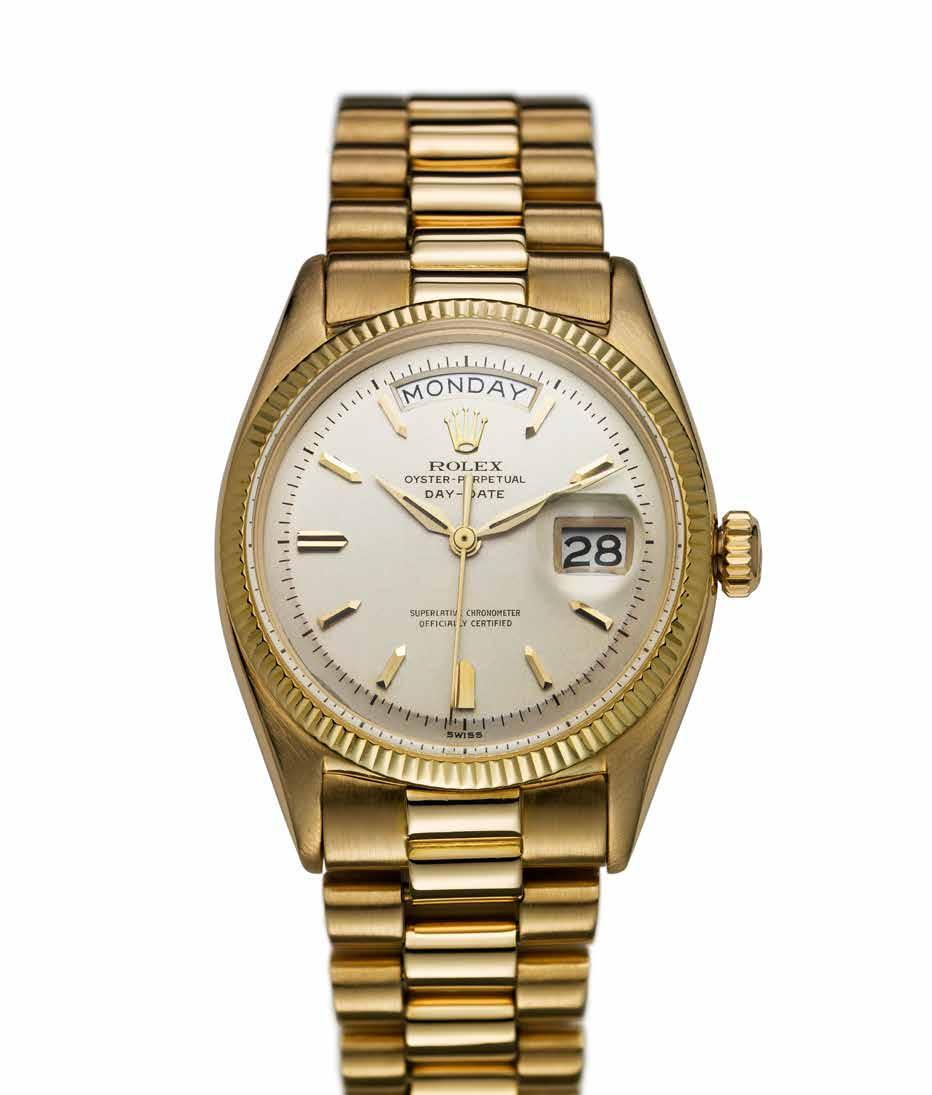
This page: First Oyster Perpetual Day-Date, 1956
Opposite page: Day-Date 40 in platinum, reference 228236
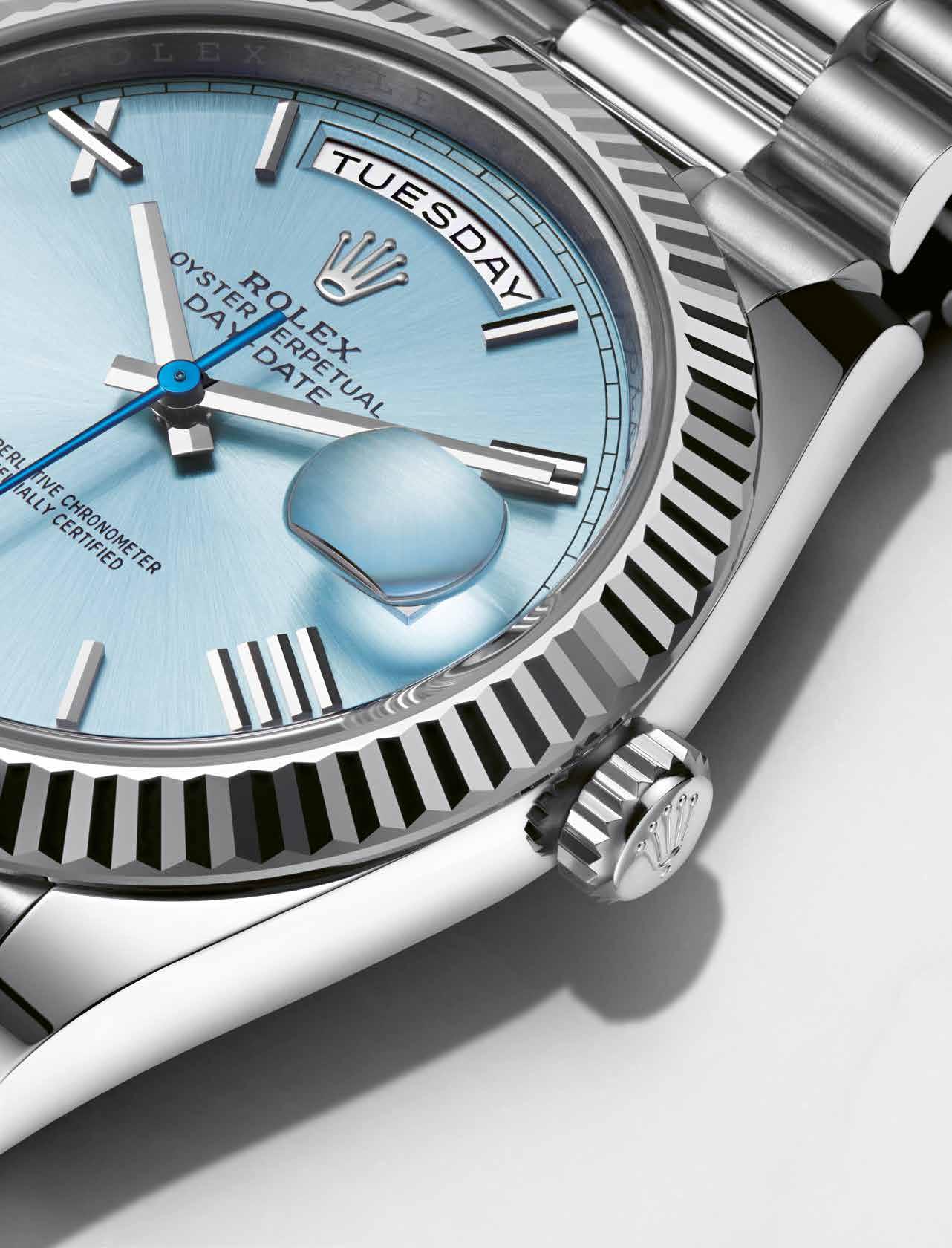


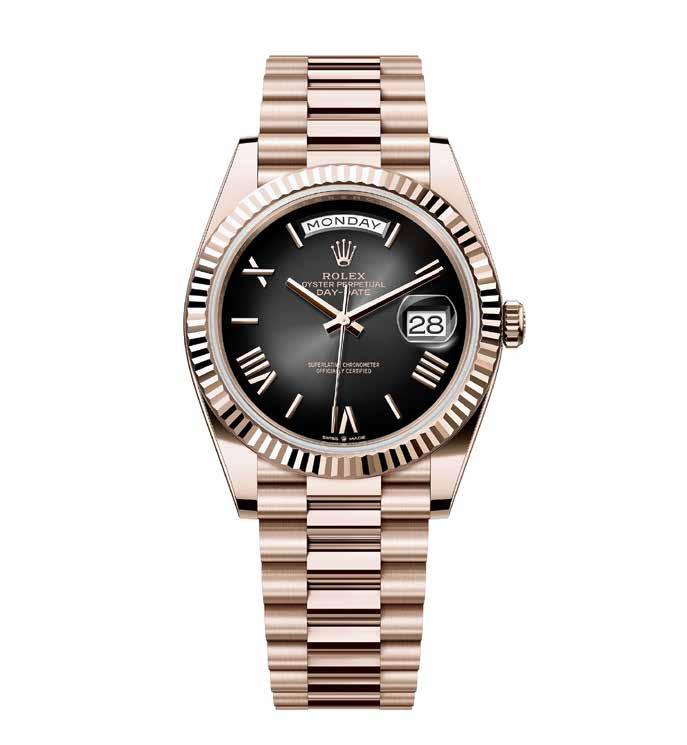
el and the ridges between the segments perfectly smooth and coplanar. In a final firing process, a stratum of colourless enamel is allowed to melt and harden into a transparent layer of protective enamel.
Rolex launched no fewer than three different versions of the Oyster Perpetual Day-Date 36 in 2023. The case and the “President” bracelet with its concealed “Crownclasp” folding clasp are made of yellow, white or Everose gold. The dial’s design is based on interlocking puzzle pieces in turquoise blue, red, fuchsia, orange, green and yellow against a monochrome background. Ten baguette-cut sapphires in six different hues mark the hours. The days of the week do not ap-
pear as usual in the curved window at the “12”. In their place are the inspiring words Happy, Eternity, Gratitude, Peace, Faith, Love and Hope. And instead of visually enlarging the date at the “3,” the cyclops lens magnifies 31 exclusive emojis, which successively appear in the date window. Turning the crown lets the wearer select the combinations at whim. Inside the case, which is water-resistant to ten bar, tried-andtested automatic calibre 3255 ticks at a pace of four hertz. Its features include a Chronergy escapement, a Paraflex antishock system, a power reserve of approximately 70 hours and an optimised ball bearing for the rotor. The only problem with these attention-grabbers: they are rare and thus very hard to acquire.
From left: Tom Cruise is wearing a Day-Date while attending the Mission: Impossible – The Final Reckoning photocall during the 78th annual Cannes Film Festival, May 2025; American basketball player Jerami Grant at Paris Fashion Week, carrying a yellow-gold Day-Date on his wrist, June 2023

From top: Day-Date 40 in Everose gold, reference 228235, 2015; Day-Date 36 in white gold with diamond bezel and Roman numerals with diamonds, reference 128349RBR; DayDate 36 in yellow gold with fluted bezel and diamond hour markers, reference 128238; Automatic calibre 3255, 2015
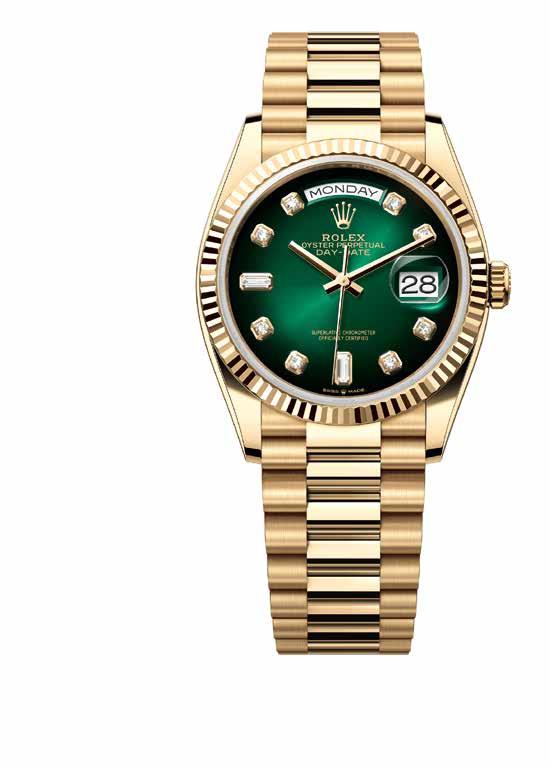
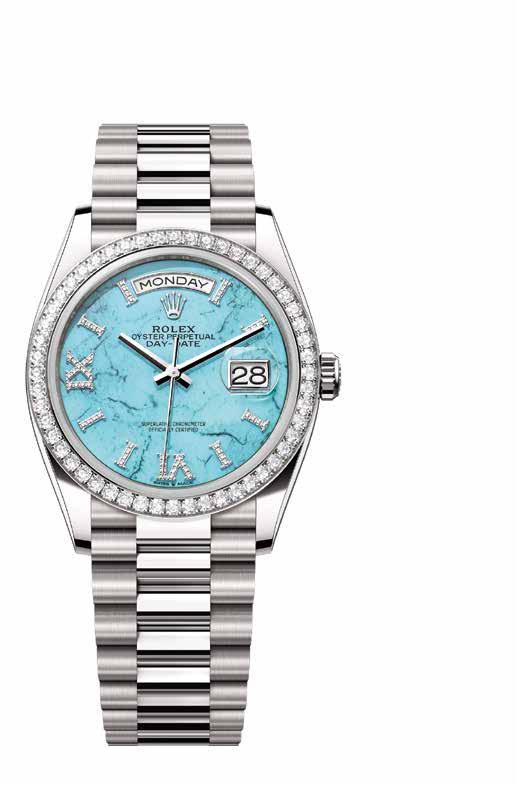
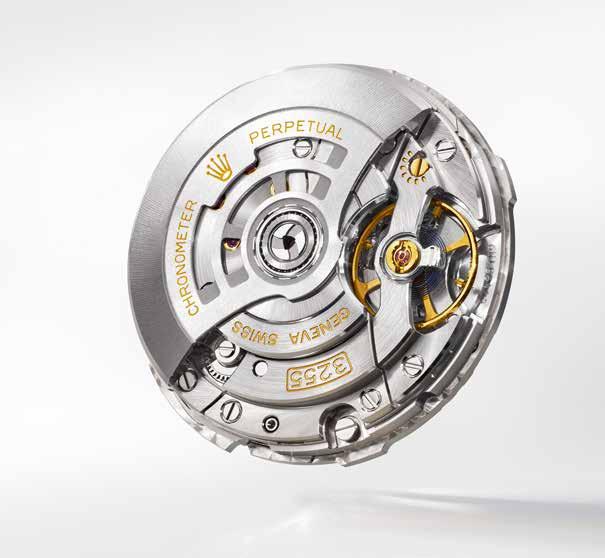
The tale begins on 8 May 1954 as the Basel Sample Fair once again opened its doors. Rolex was of course among the some 150 participating watch brands. Traditionally, general manager Hans Wilsdorf reserved the honour of presenting the innovations himself. As an important member of the triumvirate board of directors, René-Paul Jeanneret was also in attendance. However, his presence that year was for a very special reason: Rolex proudly presented a new watch that was destined to exercise a defining influence in the company’s history in the years that followed.
It was the Oyster Perpetual Submariner, and René-Paul Jeanneret played a decisive role in its inception. Begun in 1926, Rolex’s consistent development of watertight sports watches that are so elegant they cut a great figure at a dinner party may be ascribed to him. In the 1930s, the cooperation with Officine Panerai enhanced the company’s experience in this area. As a specialist in military underwater equipment,
Rolex’s Italian concessionaire supplied the Italian Navy. The products created for this customer included Radiomir watches with a large cushion-shaped Oyster case and size-matched hand-wound movement purchased from Cortébert.
As important aspects of the Submariner biography, Jeanneret’s passion for scuba diving and his friendship with the legendary underwater expert Jacques-Yves Cousteau deserve mention. The garnered expertise with regard to the technical and design requirements of professional divers’ watches made a lasting impression on Hans Wilsdorf. The instruction to develop the Submariner at the beginning of the 1950s was a mere formality. By 1953, the culmination of these creative, design, engineering and watchmaking efforts was ready. And in 1954, fair visitors could admire a watch combining formidable function and elegance, sporting a matt black dial and prominent lumed indices and hands for the hours, minutes and seconds. A small
First Oyster Perpetual Submariner, 1953
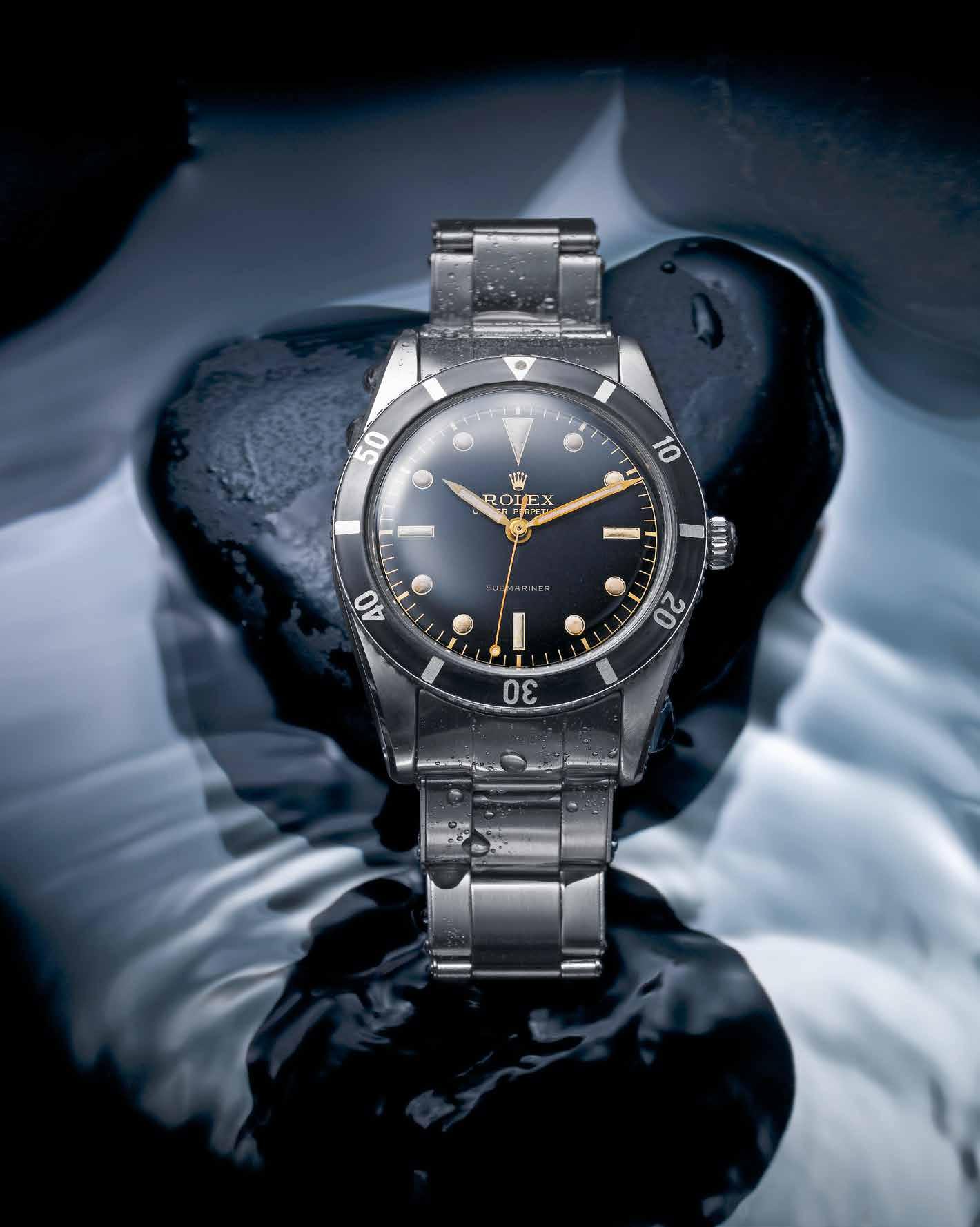
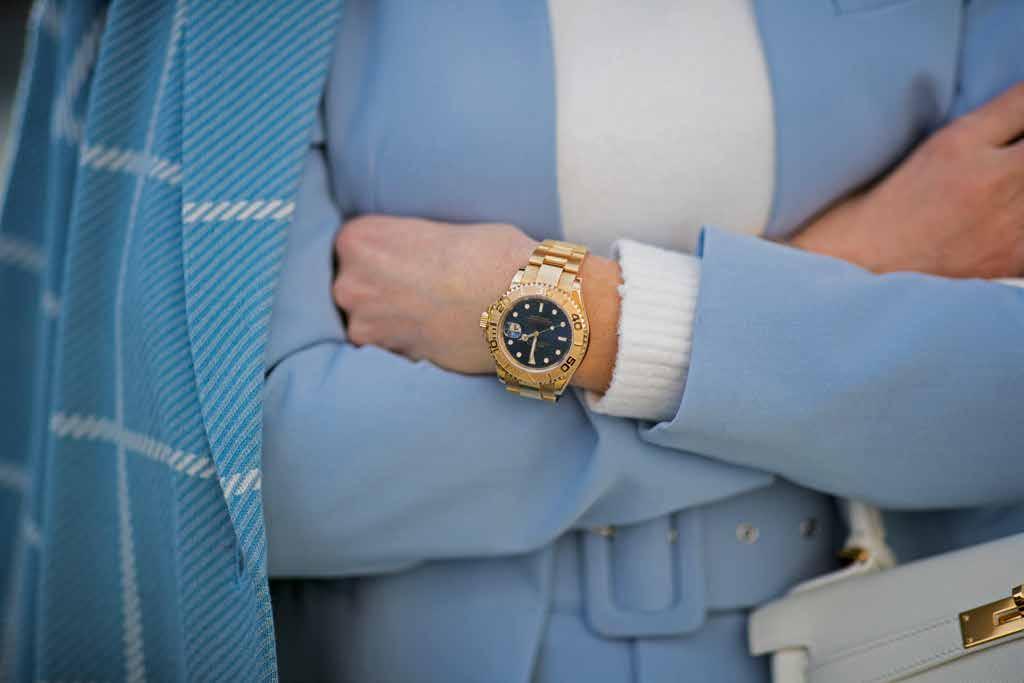
ROLEX YACHT-MASTER AND YACHT-MASTER II
Rolex has always spelled the word “Continuity” with a capital C. This also applies to the sporty Yacht-Master, which debuted at Baselworld in 1992. As usual, its case (which was watertight to 10 bar) had a sapphire crystal with an integrated magnifying lens above the date display and effective protectors flanking the screwable Triplock crown. The Oysterlock bracelet was equipped with a safety closure. Rolex reaffirmed its role as a pioneer of avant-garde design with the bezel, which could be adjusted in both di-
rections and was calibrated with individual minute strokes in raised relief. This detail instantly catapulted the Yacht-Master to the status of a frequently imitated icon.
Another important contributor to the immediate success of the gents’ model was its contemporary diameter of 40 millimetres. With references 69628 and 68628, Rolex presented two smaller versions in 1994. As usual, the small Yacht-Master (29 mm, calibre 2135) and its me-
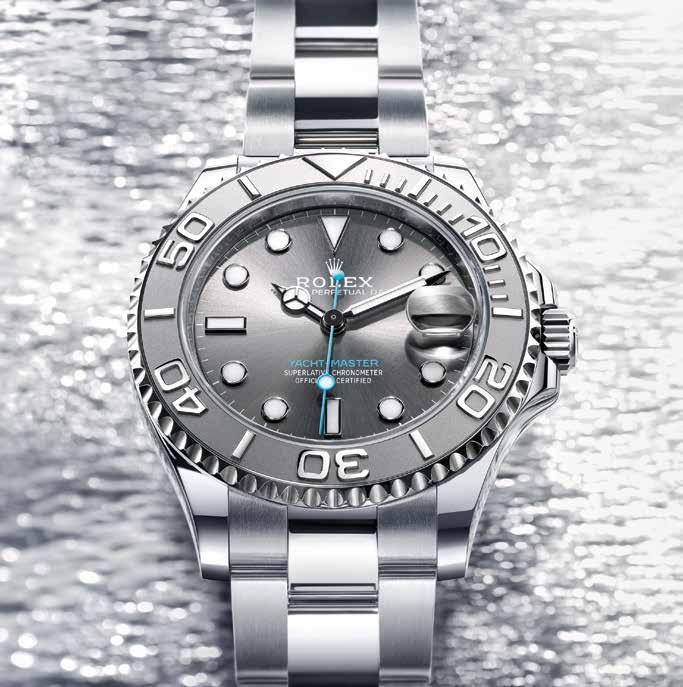
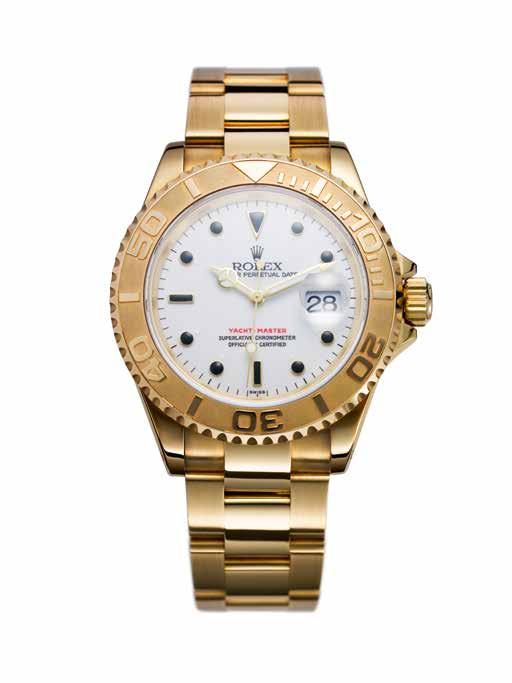
dium-sized shipmate (35 mm, calibre 2135) were only available in solid yellow gold. Incidentally, these were the first professional models with smaller case diameters. Both versions were also available with a steel case and an 18-carat yellow gold bezel starting in 1996.
Opposite page: Alexandra Lapp is wearing a vintage yellow gold Rolex Yacht-Master, Düsseldorf, Germany, 2021
This page, from top left: Oyster Perpetual Yacht-Master 37 in platinum, reference 268622; First Oyster Perpetual YachtMaster, 1992; Oyster Perpetual Yacht-Master 42 with Oysterflex strap, reference 226658, 2019
Rolex triggered a veritable Yacht-Master furore at Baselworld 1999 with its new reference 16622. Waiting lists were the order of the day. The patented term “Rolesium” denotes stainless steel for the case and bracelet juxtaposed with platinum for the bezel and dial. Stainless steel and gold, distinguished reference 16623 in 2005.
To celebrate the Yacht-Master’s 20th birthday in 2012, Rolex systematically evolved the bestselling model, which encased calibre 3135.

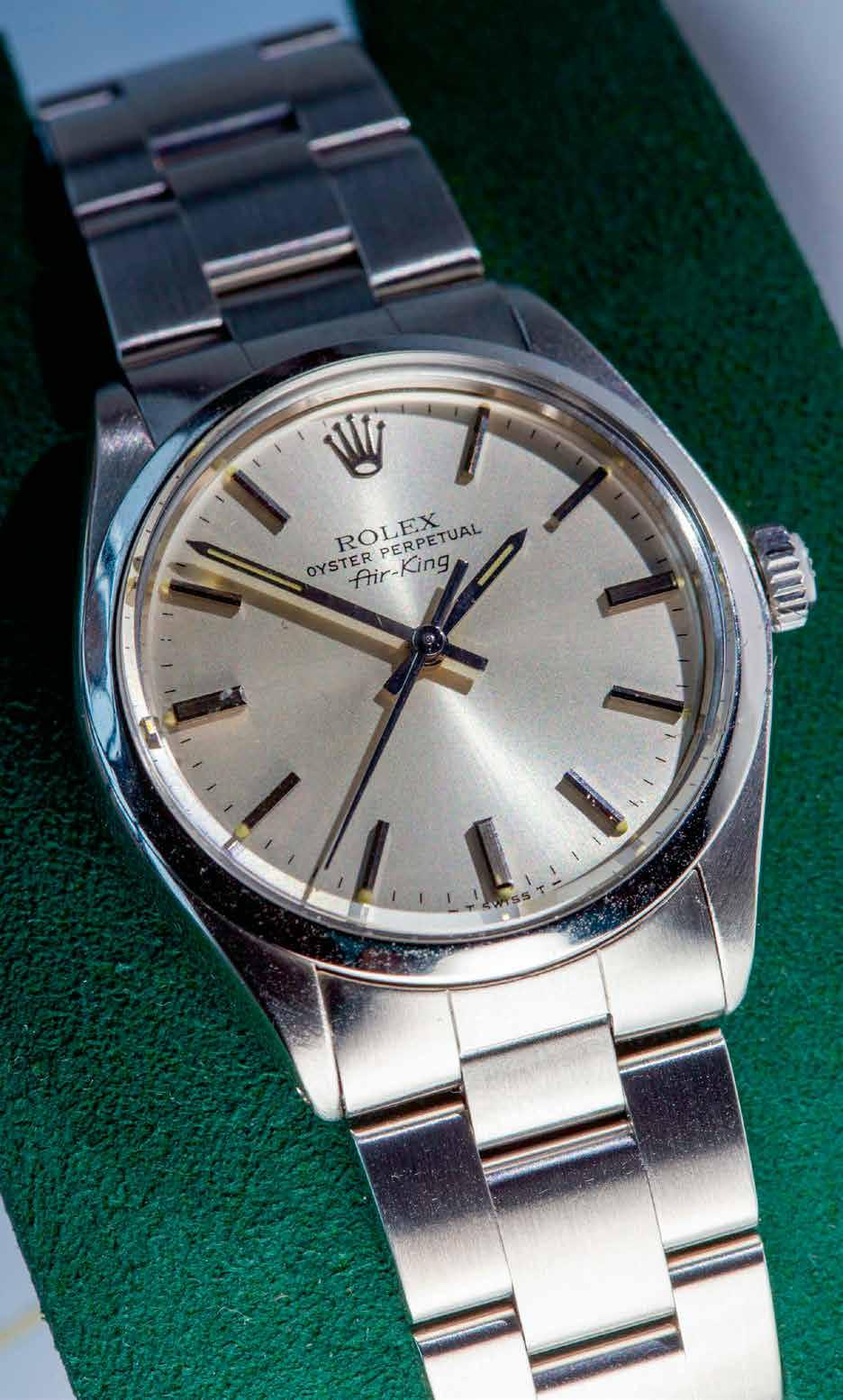
from 1979

ROLEX AIR-KING

Although Hans Wilsdorf had long made his home in Switzerland, the fact that 1940s British pilots were enamoured with Rolex had not escaped his notice. The cosmopolitan watch expert therefore encouraged the development of various watches whose names were associated with aviation: Air-Lion, Air-Giant, Air-Tiger and Air-King.
The latter line made its debut in 1945. We are talking of the reference 4925 with the 34-millimetre case customary at the time. In the end, it was the only one to survive the passing of the “Air” watch era. Rolex achieved its most lasting success with the 1957 reference 5500. The timepiece was powered by automatic calibre 1520. Its 1530 counterpart with window date was reference
5700. Reference 14000 followed. For cost reasons, these and other movements used in AirKing models, such as the 3000, were not subjected to an official chronometer test.
For Hans Wilsdorf and also his successors, the Air-King represented the first step into the world of Rolex sports watches. Their dials carried only the word(s) Precision or Super Precision.
A change was made with the 2007 Air-King reference 114200, which still had a 34-millimetre case, with automatic calibre 3130. This watch followed the Air-King reference 14000M, which was powered by the same, but largely uncertified, calibre 3130.
The 2016 Air-King reference 116900 was a highlight in terms of looks, and brought a significant upgrade on the engineering front. Its dial design was both eye-catching and opinion-dividing. The mix of Arabic numerical hour and minute markers is an acquired taste. The product designers had been inspired by the Bloodhound SSC project, which was launched in 2006 but would flounder financially in 2018.
© 2025 teNeues, an Imprint of Die Gestalten Verlag GmbH & Co. KG, Berlin
PUBLISHER
Die Gestalten Verlag GmbH & Co. KG, Berlin, 2025
TEXT
Gisbert L. Brunner
GUEST CONTRIBUTIONS
Thomas Gronenthal | Dr Oliver Knop | Rhonda Riche | Wolfgang Winter
PICTURE EDITING AND CAPTIONS
Nadine Weinhold | Gisbert L. Brunner
GRAPHIC DESIGN
Eva Stadler
PROJECT MANAGEMENT
Nadine Weinhold
TRANSLATIONS
Fiona Haberland | Howard Fine
PROOFREADING
Daniel Ross | Fiona Haberland | Nadine Weinhold
PREPRESS
Eva Stadler | Robert Kuhlendahl
COLOR SEPARATION
Eva Stadler | Group D.M.T Co., Ltd.
PRODUCTION
Alwine Krebber
ISBN 978-3-96171-702-6
ISBN 978-3-96171-721-7 (Special Edition)
Printed in the Czech Republic by PBtisk a.s.
FSC Dummy
All rights reserved.
No part of this publication may be reproduced or transmitted in any form or by any means, electronic or mechanical, including photocopy or any storage and retrieval system, without permission in writing from the publisher.
No part of this book may be used or reproduced in any manner for the purpose of training artificial intelligence technologies or systems. This work is reserved from text and data mining (Article 4(3) Directive (EU) 2019/790).
Respect copyrights, encourage creativity!
Bibliographic information published by the Deutsche Nationalbibliothek. The Deutsche Nationalbibliothek lists this publication in the Deutsche Nationalbibliografie; detailed bibliographic data is available online at www.dnb.de
For more information and to order books, please visit www.teneues.com and www.gestalten.com
Die Gestalten Verlag GmbH & Co. KG Mariannenstrasse 9–10 10999 Berlin, Germany hello@gestalten.com
Düsseldorf Office Waldenburger Straße 13 41564 Kaarst, Germany verlag@teneues.com
teNeues Press Department press@gestalten.com
https://instagram.com/teneuespublishing www.teneues.com